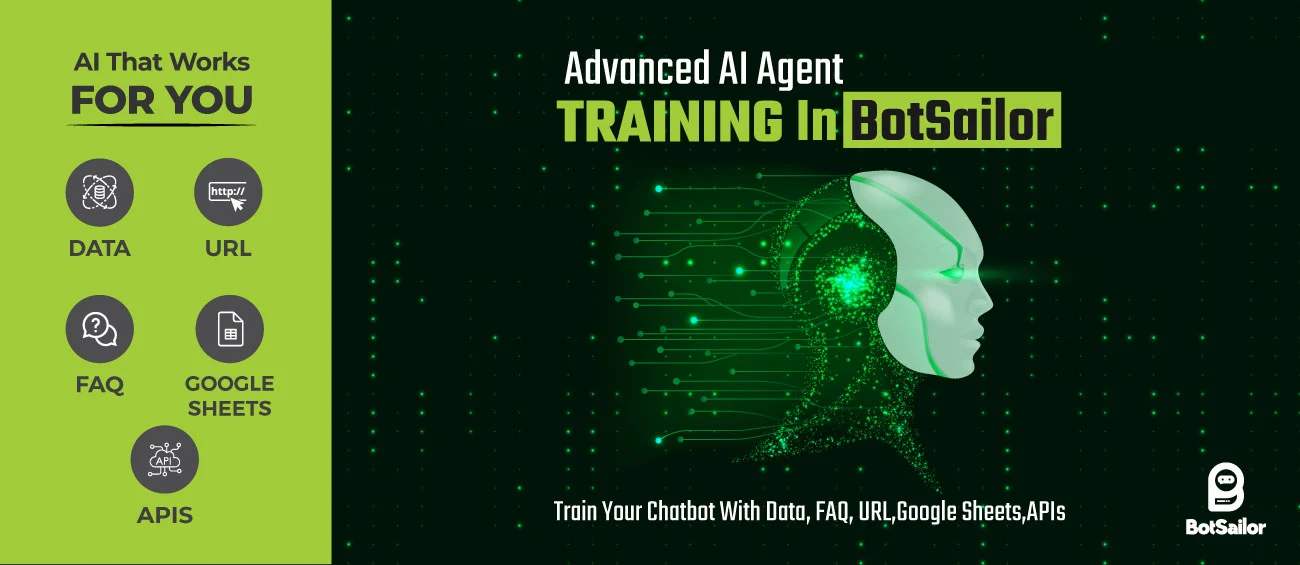In this article, I will tell you how to build a WhatsApp chatbot without coding and test it instantly using the BotSailor drag-and-drop flow builder platform.
Login and Connect WhatsApp account
1. VisitBotsailor-->2. Click “Get Started for FREE” button or “Sign” button.-->3. Fill up the fields of the form-->4. Click “Sign Up” button or “Login” button.
NB: If you have already registered an account, you will simply login with the existing account.
Now, from “Dashboard”, you have to follow the instructions:
1. Click on the "Connect Account" navigation menu.-->2.Give your business account ID and Access Token in the corresponding fields.-->3. Click on the “Connect” button.
Then, you will see a successful notification message if your ID and token are valid.
If you don’t know how to get your business account ID and Access Token, you may see theHow to Setup WhatsApp Cloud API to Create WhatsApp Chatbot.
NB: A suggestion is that you do not use the temporary access token.
Go to Visual bot flow canvas of BotSailor from Dashboard
1. Click on the "Bot Manager" menu.-->2. From "WhatsApp Bot Manager", select the desired bot account.-->3. Click on the "Bot Reply" button.-->4.Click on the "Create" button.
After clicking the "Create" button, you will be sent to the editing page called "Visual Flow Bot Builder Canvas", along with the "Document Menu" with 11 components, which is on the left side of the canvas.
Text, Image, Audio, Video, File, Interactive, Condition, New Sequence, User Input Flow, Trigger and New Post-back are the eleven components of the Document Menu.
On the top-right side of the canvas, there are five buttons- Test, Back, Re-arrange, Save and Business number (from left to right sequence).
Configure a bot onto the Visual bot flow canvas
However, in this section, I will discuss several components of the "Document Menu". When you reach the Visual Flow Bot Builder, you will see the "Start Bot Flow" component. To give a name for your bot, you have to double-click on it. Instantly, a Configure Reference modal will appear on the top-right side of the canvas.
Give a name in the "Title" field, and optionally choose a level and select a sequence. Then click on the "Ok" radio button for saving purposes.
Moreover, if you drag the curser from the "Next" socket of the "Start Bot Flow" component and drop the curser on the canvas area, a component list will appear.
From thecomponent list, you may select Image, Audio, Video, File, etc. Suppose you select the "Image" menu. Then an image component will appear. Now, double-click on it, and an image configuration form will appear immediately, which you must fill out. You can also add a post-back button, an action, a user interface, etc. So, by adding more, you can make your bot as big as you need.
However, you have to connect a trigger component to the "Trigger" socket of the "Start Bot Flow" component.
So, from the document menu,
- Select the "Trigger" component
- Drag it onto the canvas, and drop on it.
- Double-clickon the trigger.
Instantly, a Configure Reference modal will appear on the top-right side of the canvas. Give a keyword like "Hello", "Hi", "Start" etc. and save it.
Now, you will join it with the "Start Bot Flow" component. Similarly, you can configure the form of Audio, Video, and File components.
In a nutshell, you drag any component from the document menu and drop it on the canvas. Then, to configure it, double-click on it. Next, after filling up the corresponding fields of the configuration form, click on the "Ok" button. You may keep your bot as a simple bot. Moreover, you can make a complete bot as big as you need. After that, add a trigger with the "Start Bot Flow" component. Finally, save it.
If you need to see a video, you can watch here-How to create a WhatsApp Chat Widget and use it on websites to gain subscribers by BotSailor.
Test the created bot
Now, you should test the bot. So, go to your dashboard and click on "Subscriber Manager". Then, click the “option” button and select the “Manual Subscriber” option.
Instantly, a form will appear. Give a name in the “NAME” field and put a mobile number in the “PHONE NUMBER” field. But, here is a caution that the phone number must have country code without plus (+) sign. However, click on the “Save” button.
Now, if you want to verify your bot, you may click the "Test" button, select any subscriber, and click on the "Send" button. The subscriber must receive the messages within a few minutes if the bot is created successfully.
Now, you have to come back to the flow builder canvas. From the “Test” button, choose a subscriber. Then, click on the “Send” button.
Wait a few minutes. Check the target subscriber’s WhatsApp account. If the bot is successfully created, the target message will be obvious.
There is another way to check the bot. Just write the keyword, like "Hi" from a customer WhatsApp account and wait a few minutes. Finally, the message conversion based on your bot will be displayed. So, if you get the corresponding conversion, it is an indicator that the bot creation was successful.
Analyze and Improve
To analyze the bot, you can gather user feedback. By monitoring your business, you can also improve the bot's design. You can change and improve the bot as much as you want, according to your business.
That’s all, and thank you to all.
Related Articles:
Create Instagram AI Chatbot and Train with AI Assistant
How to Create Instagram Chatbot for Free in 2025





(0) Comments